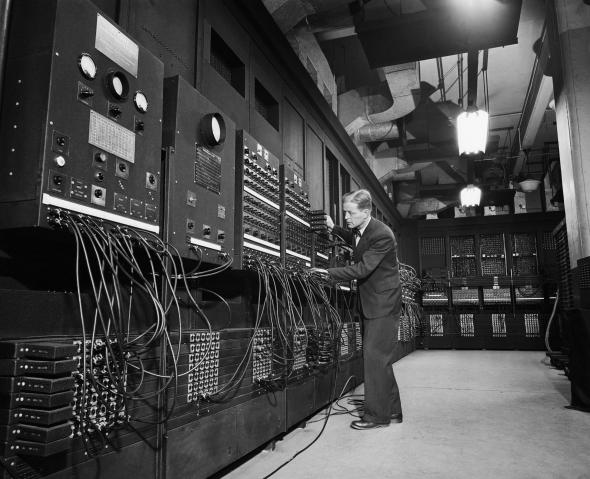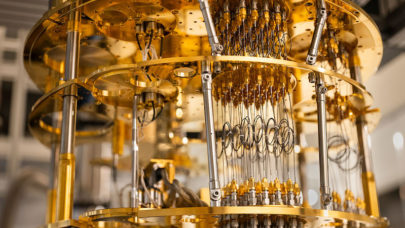With little fanfare, today’s computer revolution was arguably born and announced through a small, innocuous, two-column story at the bottom of the front page of The New York Times on Feb. 15, 1946.
In that story and others, the previously classified project, ENIAC, formally known as the Electronic Numerical Integrator and Computer and as the world’s first vacuum tube, all-electronic, programmable supercomputer, was unveiled to the world.
“Electronic Computer Flashes Answers, May Speed Engineering,” declared the headline of the article by reporter T.R. Kennedy, Jr.
That headline turns out to be quite the understatement.

Seventy-five years later, ENIAC is being celebrated today on its anniversary as the machine that essentially began the computing power revolution that fuels our computers, smartphones, cars, the internet and a wide range of technologies that run the world’s businesses and industries every day.
Designed by physicist John Mauchly and electrical engineer J. Presper Eckert in Philadelphia, the idea behind ENIAC was proposed in 1942 by Mauchly as an all-electronic calculating machine. In the midst of World War II at that time, the U.S. Army was seeking ways to calculate complex trajectories for missiles and other armaments. Mauchly’s idea and the Army’s needs soon came together and led to ENIAC’s construction. ENIAC was not completed, though, until after the war. Weighing 30 tons and filling a 30-by-50-foot room, it was assembled and operated at the University of Pennsylvania.
‘A Critical Milestone’
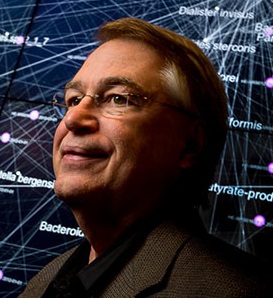
Larry Smarr, the founding director of National Center for Supercomputing Applications (NCSA) and a professor emeritus at the University of California-San Diego, told HPCwire sister pub EnterpriseAI that ENIAC “was a critical milestone on the road to supercomputing. You can safely say it was the first all-vacuum tube supercomputer.”
A previous notable and powerful computer at that time was the Harvard Mark 1, but that machine used electromagnetic relays for its computing, said Smarr. ENIAC’s design called for using almost 18,000 vacuum tubes instead, which resulted in dramatically improved performance, he added. “It certainly was a supercomputer because it was the fastest on the planet at that time, and it ran about 400 FLOPS, or 400 floating point operations per second. To put that into perspective, your smartphone runs about a billion FLOPS. And it doesn’t weigh tons, and doesn’t take up a whole room.”
What really highlighted the machine was its amazing speed, said Smarr. “ENIAC was 1,000 times faster than the Harvard Mark 1,” he said. “That kind of exponential change, it was happening 75 years ago,” said Smarr. “I think that’s important.”
ENIAC was a decimal computer, performing its calculations in decimals before the later move to binary computations, said Smarr. The machine was programmed using a large number of dials and cords on the front. The dials were turned to different settings and the cords were plugged and unplugged from one receptacle to another on the machines, like an old-fashioned telephone operator’s panel.
“Software was still in the future,” said Smarr. “But they programmed it to do incredibly complex problems for the military. It wasn’t a business machine.”
Setting ENIAC apart from all the computers that came before it, including the Mark 1, was that it led the way to today’s supercomputers in multiple ways, said Smarr.
“Most of the supercomputers in the last 75 years have been built to solve very complex physics based problems,” he said. “The idea that you could map equations of physics on to a digital computer built out of whatever the best technology of the day was, ENIAC was more or less the first. You could argue the Mark 1 was as well and there may be a few others that historians could mention, but ENIAC set off the notion that from then on the country would build faster and faster computers until today’s computers are well over a trillion times faster than ENIAC.”
After ENIAC came other huge computer breakthroughs, including transistorized circuits, integrated circuits in silicon, software and more, driving faster and faster performance and possibilities.
ENIAC Inspired Computing Innovations to Come
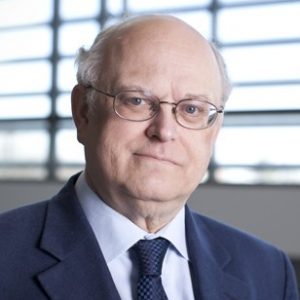
ENIAC’s useful life was short – it was only used until 1955 – but its impact was large, said Thomas Sterling, a professor of intelligent systems engineering and the director of the AI Computing Systems Laboratory at Indiana University.
“It was a full system that demonstrated the feasibility of vacuum tube technology for digital computing,” said Sterling. “ENIAC was the first proof-of-concept demonstration of digital electronic calculations for real applications. It was a little bit late to have as big an impact as one would have liked in the war, nonetheless, it was used, not just for its original purpose, which was army projectile trajectories, but also by Los Alamos and others in some of the earliest modeling forums for the atomic bomb evolution.”
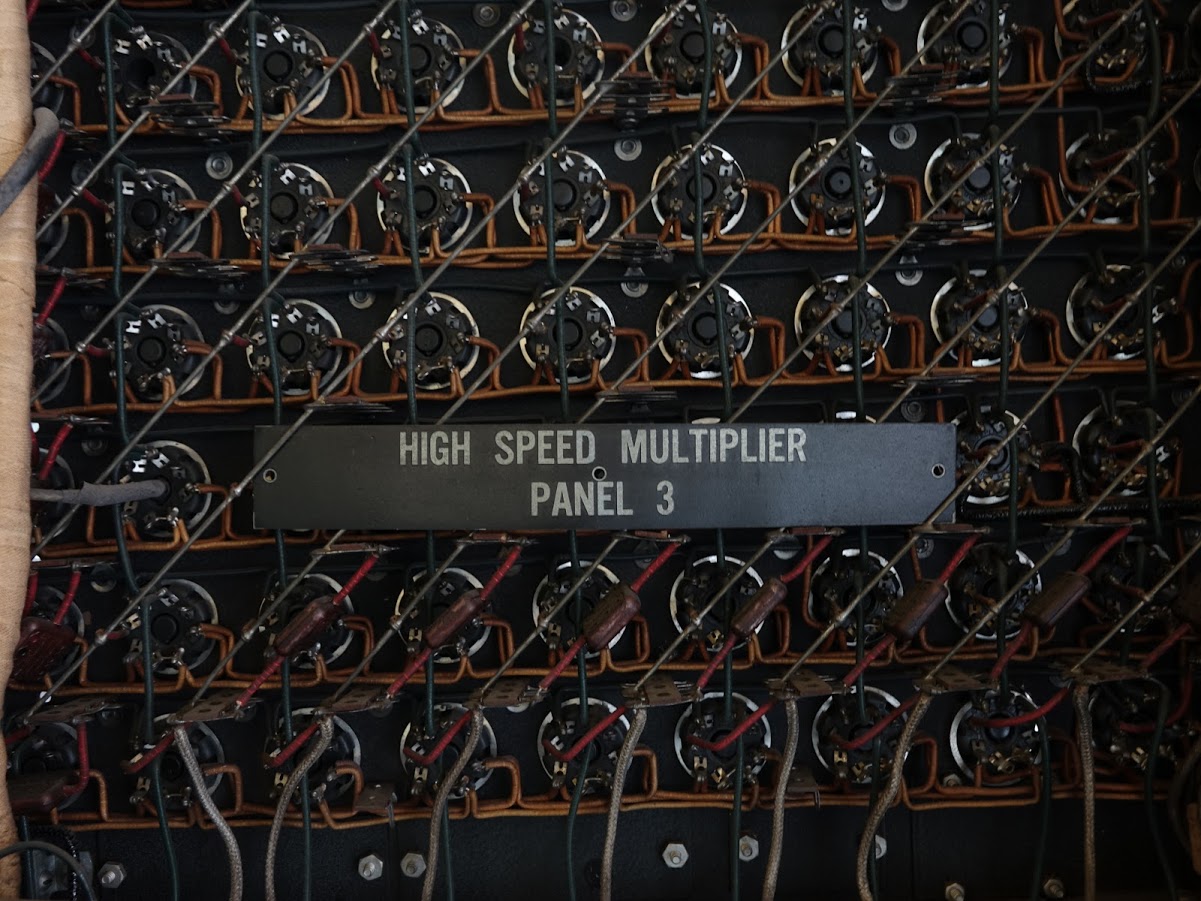
ENIAC also inspired, trained and influenced many people to enter the then nascent field of computing, he said. Eckert and Mauchly would go on to create their own computer company which would later become part of Sperry UNIVAC and then part of Unisys.
“The proof-of-concept that ENIAC was allowed Eckert and Mauchly and John von Neumann to intellectually and mentally make the next step [to today’s computing], based on all the technologies that ENIAC provided, improved, demonstrated and used,” said Sterling.
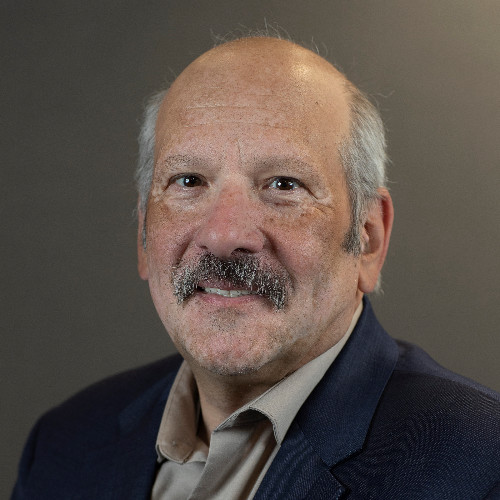
Jim Thompson, chief engineer at Unisys and vice president of engineering strategy for the company’s ClearPath Forward systems, told EnterpriseAI that although ENIAC started its life as a big, fast trajectory calculator for the Army, improvements were added which later added to its value and power as a computer.
All those rotary switches and patch cords used to program ENIAC eventually inspired concepts and new thinking that later led to creating stored computer programs which would eventually influence and transform computing for science, research, business and more, said Thompson.
“So, they got into that business and [led to] all of that,” he said. “That was really a sea change. ENIAC was there at the beginning … in about the time same timeframe that took us from calculators to computers. That’s a big shift in terms of where we were at.”
Each year Unisys co-sponsors and participates in an ENIAC Day event, which highlights the importance and breadth of the machine’s story.
So influential has ENIAC been since it was created that it changed electrical engineering and birthed new disciplines in the creative arts and sciences and computer science itself, said Thompson. “Everyone’s touched by it,” he said. “Anybody who reads an email.”
